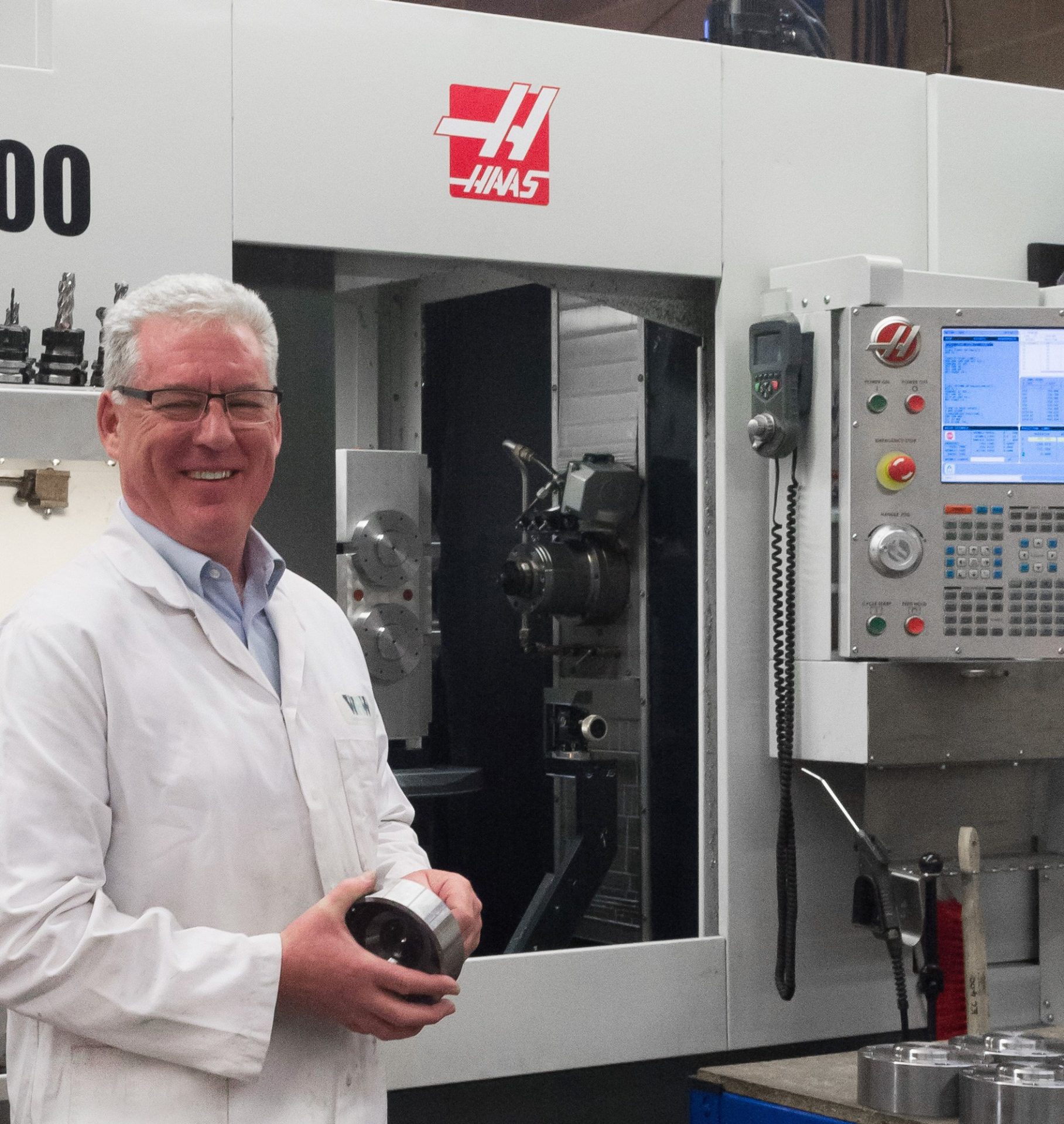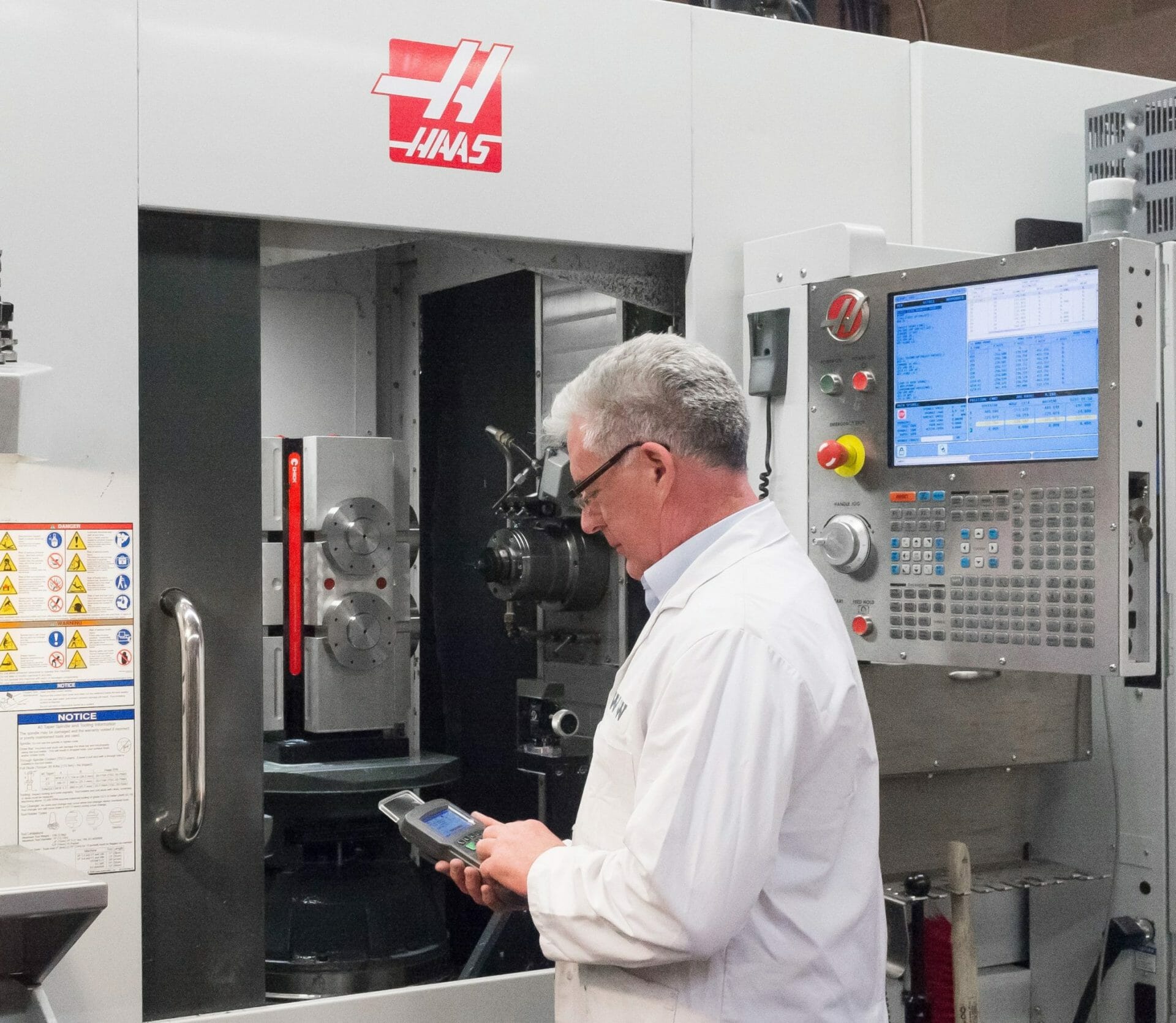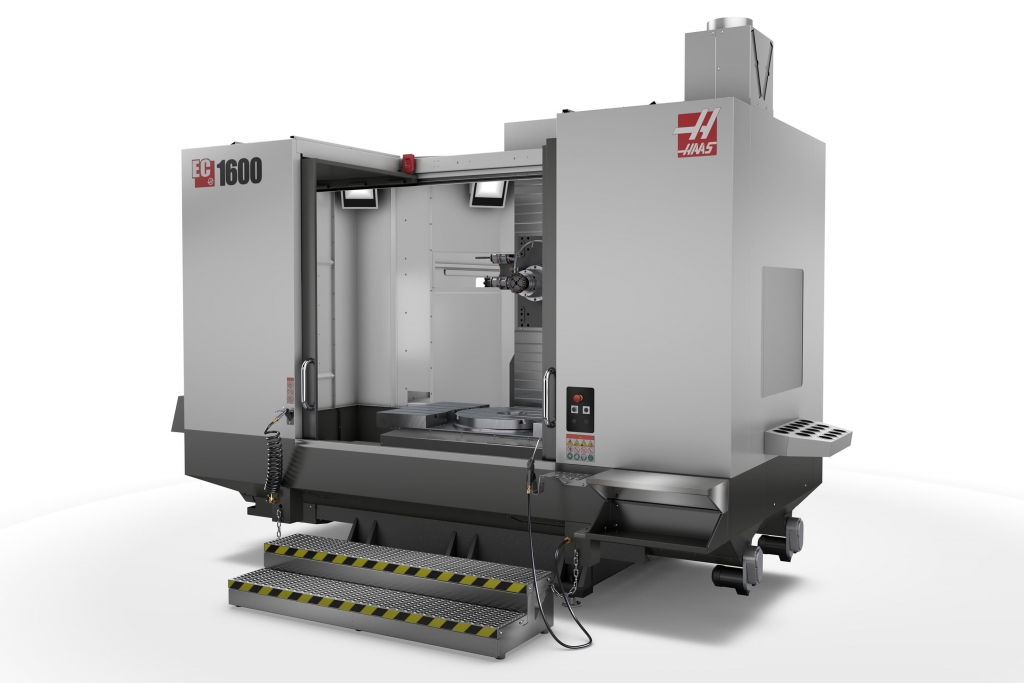WRW Engineering Ltd
Founded in 1953 in Walton-on-Thames, WRW Engineering Ltd supplies precision machined parts, along with finished assembled products, to the medical and aerospace industries.
Current owners Peter Wreford and James Porter have been investing heavily in new equipment and factory space. Today, the company employs 10 people, 7 as CNC operators, the rest working in the busy assembly department.

“We purchased our first Haas mill in 1991, one of the first to come into the UK, and have continued investing in Haas technology ever since. Standardising on the Haas platform makes it easier to schedule work, and to move employees from machine to machine.”
Other Haas machines were added to the line-up totalling 6 verticals and an SL-20 Lathe. The original VF-1 was part exchanged but as Peter says, it was always a great worker. “We hammered that machine for 13 years, 12-15 hours a day and it always gave us good results. The newer machines are much faster though. The speeds and rapids have vastly increased and the tool changer is so quick.”
Their most recent investment, however, is a Haas horizontal machining centre. “We know how good the Haas machines are,” adds Peter, “otherwise we wouldn’t keep buying them. The specifications, cost and especially the compact footprint of the horizontal just couldn’t be beaten. Everything else out there seems to be huge and double the price.”
Most people appreciate that horizontals have a real advantage, rather than forcing swarf out of vertical holes, the horizontal lets gravity do its job – swarf falls effortlessly out of the way. Instead of endmills cutting and recutting swarf, which destroys the tool’s cutting edge, the horizontal maintains clean cutting conditions for the tool. The results: less swarf clogging, leading to a better surface finish and double or triple tool life.
WRW’s largest customer is Elekta, another Haas user, based in Crawley, West Sussex. “We’re currently using our Haas machines to make vacuum components for radiotherapy machines,” James explains. “A vacuum in the waveguide has to be maintained so that electrons don’t collide with gas molecules, as this would prevent them reaching the target. What’s referred to as a ‘very high vacuum’ is required, so the precision needed for these components is tight. We’ve our own clean room equipped with a Mitutoyo CMM, so we know that the Haas machines actually exceeds their reported figures for accuracy.”

“The vacuum component is cut in two operations. We load a tombstone with two mild steel blanks on each face, making a total of eight. One pallet does the front of the part, the other does the back.”
Peter adds, “The horizontal is run for 16 hours a day and doesn’t stop cutting, it never needs a lunch break or a tea break. It runs pretty long cycles, meaning an operator can look after more than one machine. We get two pallets completed during the day, and another is loaded for lights-out operation overnight.
“We program our machines directly at the control. The Haas control has templates for nearly every possible setup scenario. In many cases, we simply locate the template for what we would like to do, fill in the on-screen questions, press the enter key and then hit the cycle start button.
“We’re especially impressed with the Haas wireless probing system, which reduces our set-up times. The system includes a tool-setting probe and a spindle probe. The toolsetting probe sets all our tool lengths and diameters in a fraction of the time it would take to do this manually. The spindle probe locates the work origin just as easily.”
“We’re delighted with our decision to invest in Haas,” concludes James. “It’s, without doubt, one of the best choices we’ve ever made.”
“We’re delighted with our decision to invest in Haas,” concludes James. “It’s, without doubt, one of the best choices we’ve ever made.”
James Porter





